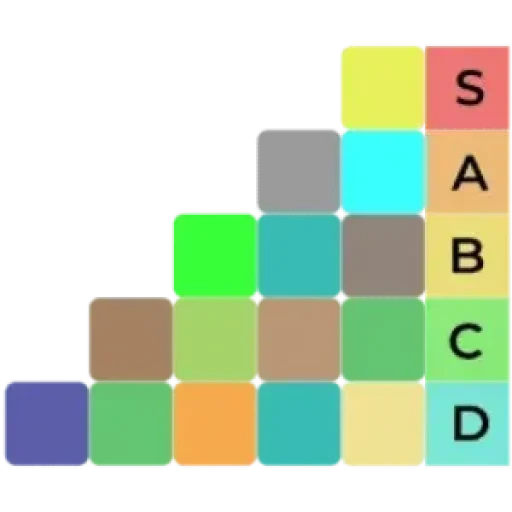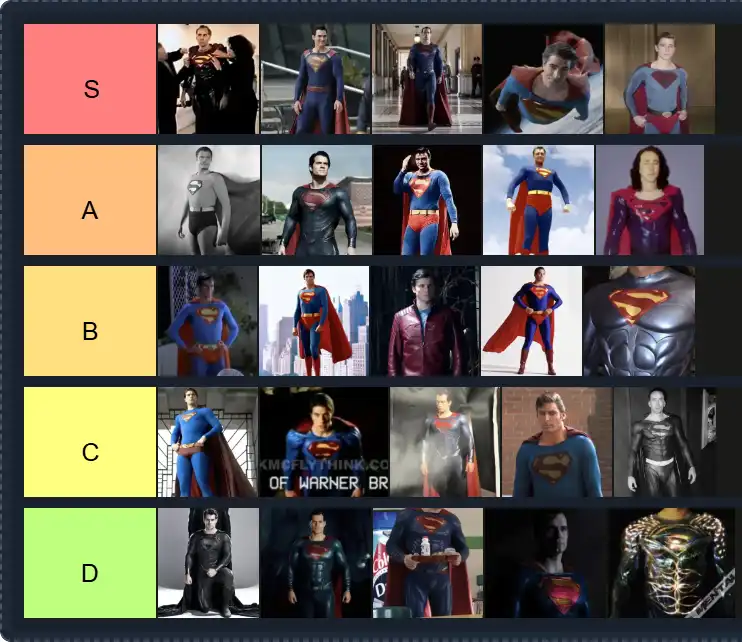The Ultimate Every Single US President Tier List: Ranking All 45 Commanders-in-Chiefs of America
Creating a definitive every single US President tier list sparks passionate debate among historians, political junkies, and casual learners alike. Ranking all 45 presidents from Washington to Biden requires weighing leadership, crisis management, legacy, and impact. This comprehensive presidential tier list breaks down every commander-in-chief, offering a clear US presidents ranking based on historical consensus and enduring influence.
Here is your Every single US President Tier List Maker
Why Tier Lists Matter for Presidential History
Tier lists transform complex historical analysis into accessible, engaging formats. Unlike simple numerical rankings, a president tier list groups leaders by comparable impact, making it easier to understand relative performance across different eras. This complete US president ranking considers:
- Leadership in Crisis: How did they handle wars, depressions, or social upheaval?
- Vision & Agenda: Did they set a clear direction and achieve key goals?
- Moral Authority: Did they uphold presidential integrity and inspire the nation?
- Long-Term Impact: How did their policies shape America’s future?
- Historical Consensus: What do scholars and experts consistently say?
Defining the Tiers: From S-Tier Legends to F-Tier Failures
- S-Tier (Transformative Legends): Presidents who fundamentally reshaped America, faced existential crises with brilliance, and left an overwhelmingly positive legacy. The gold standard.
- A-Tier (Highly Effective): Strong leaders with significant achievements, effective governance, and largely positive historical standing. Just shy of legendary status.
- B-Tier (Solid & Competent): Good presidents who managed the country well, had notable successes, but faced significant challenges or lacked transformative impact.
- C-Tier (Average/Mixed): Presidents with a mixed record – some achievements countered by notable failures, controversies, or periods of ineffective leadership. Historically middling.
- D-Tier (Below Average): Presidents whose terms were marked by poor decisions, significant scandals, failure to address major crises, or overall weak leadership.
- F-Tier (Failures/Damaging): Presidents whose actions (or inactions) caused significant harm to the nation, undermined democracy, or are widely viewed as catastrophic failures.
The Every Single US President Tier List: Era by Era
1. Early Republic & Founding (1789-1825)
- S-Tier: George Washington (1789-1797): Set the indispensable precedents, held the fragile union together, embodied integrity.
- A-Tier: Thomas Jefferson (1801-1809): Louisiana Purchase, Lewis & Clark, championed individual liberty (despite contradictions).
- B-Tier: John Adams (1797-1801): Kept US out of war with France, defended rule of law (Alien & Sedition Acts tarnish record). James Madison (1809-1817): Father of Constitution, led during War of 1812 (war management flawed).
- C-Tier: James Monroe (1817-1825): “Era of Good Feelings,” Monroe Doctrine (largely passive leadership, benefited from predecessors’ work). John Quincy Adams (1825-1829): Brilliant diplomat, visionary infrastructure plans (ineffective politician, one term).
2. Jacksonian Era & Antebellum (1829-1860)
- B-Tier: Andrew Jackson (1829-1837): Expanded democracy (for white men), strong executive (Trail of Tears, Bank War, nullification crisis make him highly divisive).
- C-Tier: Martin Van Buren (1837-1841): Organized Democratic Party, handled Panic of 1837 (blamed for depression). James K. Polk (1845-1849): Achieved Manifest Destiny (Mexican-American War, slavery expansion).
- D-Tier: John Tyler (1841-1845): Set VP succession precedent, annexed Texas (expelled from party, ineffective). Millard Fillmore (1850-1853): Compromise of 1850 (enforced Fugitive Slave Act, appeased South). Franklin Pierce (1853-1857): Young America expansion (Bleeding Kansas, Ostend Manifesto, worsened sectionalism). James Buchanan (1857-1861): Diplomatic experience (utter failure to prevent secession, Dred Scott decision support).
3. Civil War & Reconstruction (1861-1881)
- S-Tier: Abraham Lincoln (1861-1865): Saved the Union, emancipated slaves, defined modern America with moral clarity. Unassailable.
- A-Tier: Ulysses S. Grant (1869-1877): Crushed KKK, supported Civil Rights, stabilized post-war economy (corruption scandals mar administration).
- C-Tier: Andrew Johnson (1865-1869): Accidental president (hostile to Reconstruction, impeached). Rutherford B. Hayes (1877-1881): Ended Reconstruction (Compromise of 1877, civil service reform). James A. Garfield (1881): Short tenure, reform promise (assassinated).
4. Gilded Age & Progressive Era (1881-1923)
- A-Tier: Theodore Roosevelt (1901-1909): Trust-buster, conservationist, built modern presidency, projected US power globally.
- B-Tier: Grover Cleveland (1885-1889, 1893-1897): Fiscal conservatism, civil service reform (Panic of 1893, harsh response to Pullman Strike). Woodrow Wilson (1913-1921): Progressive reforms, led US in WWI, League of Nations (racist policies, suppression of dissent).
- C-Tier: Benjamin Harrison (1889-1893): Sherman Antitrust Act, modern navy (high tariffs, unpopular). William McKinley (1897-1901): Spanish-American War, economic growth (imperialism, assassinated). William Howard Taft (1909-1913): Trust-busting, antitrust (poor politician, split GOP). Warren G. Harding (1921-1923): Return to normalcy (Teapot Dome scandal, corruption).
- D-Tier: Chester A. Arthur (1881-1885): Surprising civil service reform (accidental president, lacked mandate).
5. Roaring Twenties, Depression & WWII (1923-1945)
- S-Tier: Franklin D. Roosevelt (1933-1945): New Deal, led US through Great Depression & WWII, reshaped government’s role. Four terms defined an era.
- D-Tier: Calvin Coolidge (1923-1929): Prosperity (laissez-faire policies contributed to Depression). Herbert Hoover (1929-1933): Humanitarian (failed to adequately address Great Depression).
- C-Tier: Harry S. Truman (1945-1953): Ended WWII, Marshall Plan, desegregated military (Korean War, low approval).
6. Cold War & Social Change (1945-1974)
- A-Tier: Dwight D. Eisenhower (1953-1961): Cold War stability, Interstate Highway System, warned of “Military-Industrial Complex.”
- B-Tier: Lyndon B. Johnson (1963-1969): Civil Rights Act, Voting Rights Act, Great Society (Vietnam War escalation).
- C-Tier: John F. Kennedy (1961-1963): Inspired nation, Cuban Missile Crisis (Bay of Pigs, limited legislative success, assassinated). Richard Nixon (1969-1974): China opening, EPA, detente (Watergate, resigned in disgrace).
- D-Tier: Gerald Ford (1974-1977): Healed nation post-Watergate (Nixon pardon, WIN button).
7. Late Cold War to Modern Era (1977-Present)
- B-Tier: Ronald Reagan (1981-1989): Ended Cold War, economic revival (Iran-Contra, deficit spending). Barack Obama (2009-2017): ACA, responded to 2008 crisis, ended Iraq War (slow recovery, drone strikes).
- C-Tier: Jimmy Carter (1977-1981): Human rights focus, Camp David Accords (Iran Hostage Crisis, stagflation). George H.W. Bush (1989-1993): Gulf War, reunified Germany (broken “no new taxes” pledge). Bill Clinton (1993-2001): Economic boom, balanced budget (impeachment, scandals). George W. Bush (2001-2009): 9/11 response, PEPFAR (Iraq War WMD, Katrina response, financial crisis).
- D-Tier: Donald Trump (2017-2021): Tax cuts, judicial appointments (COVID-19 response, Jan 6th, unprecedented divisiveness, impeached twice).
- Too Early/Incomplete: Joe Biden (2021-Present): Infrastructure law, Inflation Reduction Act (Afghanistan withdrawal, inflation, age concerns – legacy still forming).
8. Key Takeaways from This US Presidents Ranking
- Context is Crucial: Presidents faced vastly different challenges. Judging Washington by 21st-century standards is as flawed as judging Biden by 18th-century ones.
- Greatness Often Requires Crisis: S-Tier presidents (Lincoln, FDR) are defined by navigating existential threats.
- Legacies Evolve: Truman left office unpopular but is now highly regarded. Early rankings of recent presidents often shift with time.
- Character Matters: Scandals (Harding, Nixon, Clinton) or moral failures (Jackson, Buchanan) significantly impact historical standing.
- Subjectivity Remains: While historians offer consensus (like C-SPAN’s rankings), personal values shape individual tier lists. Where would you place Reagan or Obama?
Create Your Own Presidential Tier List!
This every single US President tier list provides a framework, but history is dynamic. Create your own president tier list using our template! Consider which presidents you think are underrated or overrated. Do you value economic success above all? Or is moral leadership paramount? Rate the presidents based on your criteria and see how your presidential ranking compares to historians or public opinion.
Whether you’re a student, educator, or history enthusiast, exploring the complete US president ranking through a tier list offers a fascinating lens on America’s highest office. Who makes your S-Tier? Share your president tier list and join the conversation!
Check out Our other Tier List Makers here

![Boxers Tier List | The best Boxers Tier List 2025 1 Boxers_Tier_List[1]](https://tier-list-maker.com/wp-content/uploads/2025/02/Boxers_Tier_List1.webp)

![Infuse SMP Tier List | The best Infuse SMP Tier List 2025 3 Infuse_SMP_Tier_List[1]](https://tier-list-maker.com/wp-content/uploads/2025/02/Infuse_SMP_Tier_List1.webp)
![Especialidades Medicina Tier List | The best Especialidades Medicina 2025 4 Especialidades_Medicina_Tier_List[2]](https://tier-list-maker.com/wp-content/uploads/2025/02/Especialidades_Medicina_Tier_List2.webp)
![Famous Tier List | The best Famous Tier List 2025 5 Famous_Tier_List[1]](https://tier-list-maker.com/wp-content/uploads/2025/02/Famous_Tier_List1.webp)
![Spongebob Tower Defence Tier List | The best Spongebob Tower Defence 6 Spongebob_Tower_Defence_Tier_List[1]](https://tier-list-maker.com/wp-content/uploads/2025/02/Spongebob_Tower_Defence_Tier_List1.webp)